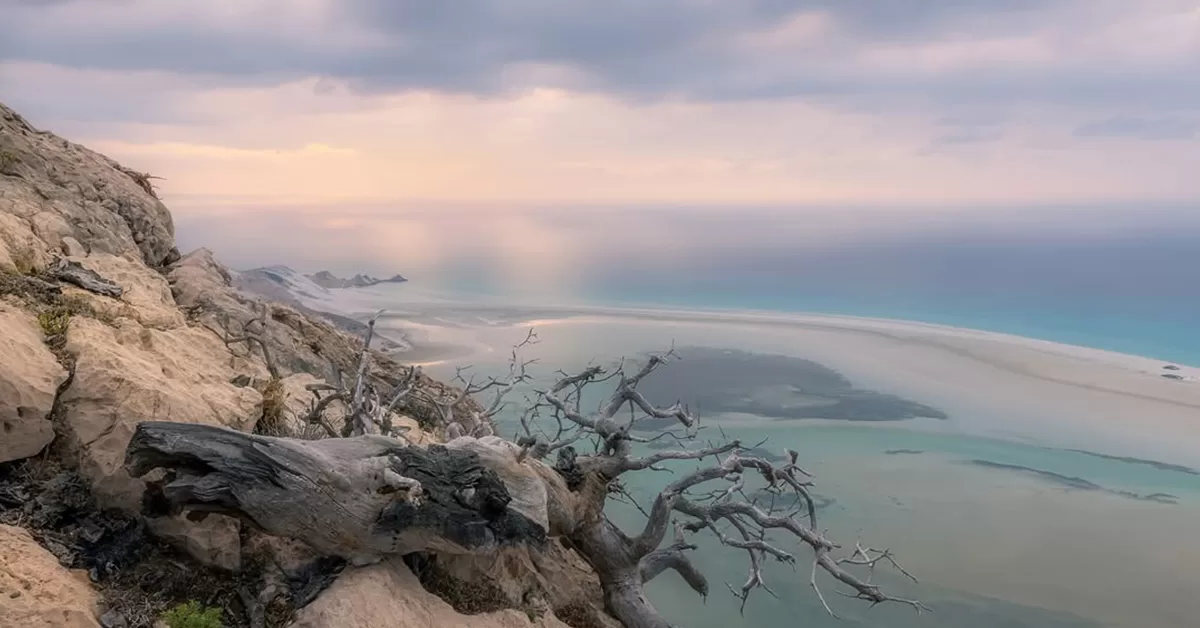Imagine a place where the trees resemble something from a Dr Seuss book, the landscapes are strange and beautiful, and the isolation has formed an ecosystem not found anywhere else on Earth. This place is Socotra Island, a remote group of islands in the Indian Ocean. It is often referred to as the “Most Alien-looking place on earth,” and for good reason.
Here are 10 extraordinary facts that show why Socotra is a truly unique destination for adventurous and curious travellers.
1- A Land of Endemism
Socotra’s most notable feature is its incredible number of species that are unique to the island. Because of its long geological isolation, about 37% of its plant species, 90% of its reptile species, and 95% of its land snails are found only here. This rich variety of life led to its designation as a UNESCO World Heritage site in 2008.

2- The Dragon’s Blood Tree is the symbol of Socotra
This tree, known scientifically as Dracaena cinnabari, has an umbrella-shaped top and twisted branches, resembling a mushroom-like alien plant. Its bright red sap gives the tree its name. For centuries, people have used this sap for medicine, dyes, and even as a varnish.

3- Trees that look like Bottle Trees and Cucumbers
The strange and beautiful plants don’t end with the Dragon’s Blood Tree. You will also find the “bottle tree” (Adenium obesum subs. sokotranum) with its swollen trunk that stores water, and the unusual “cucumber tree” (Dendrosicyos socotranus), which is the only tree species in the cucumber family.

4- A Land Mass with Ancient Origins
Socotra is not a volcanic island. It has continental origins. Geologists think the archipelago was once part of the ancient supercontinent Gondwana. It broke away during the Miocene epoch, long before other landmasses took their current shape.

5- A Haven for Birdwatchers
While mammals are rare on the island, Socotra is an important spot for birds. Birdlife International has labelled it an “Endemic Bird Area.” It hosts six unique bird species, such as the Socotra starling and the Socotra sunbird. It also has the highest global density of the Egyptian Vulture.

6- An Archipelago of Many Islands
Socotra is the largest of a small archipelago, which also includes the islands of Abd al Kuri, Samhah, and Darsa, along with several rocky islets. Together, they form a distinct and protected ecosystem.

7- A Pristine and Untouched Environment
Due to limited tourism and a focus on eco-friendly travel, Socotra stays mostly untouched. The island has a small local population. Travelers often stay in eco-camps or tents, which helps preserve its natural beauty and reduces their impact.

8- Home to an Endemic Language
The island’s isolation has shaped both its nature and culture. The local Socotri people speak their own unique language, known as Socotri, which is not found anywhere else in the world.

9- A History of Trade and Protection
Socotra has a long history and is mentioned in ancient trade routes and legends. The Portuguese occupied it for a short time in the 16th century. Later, it came under the protection of the British Empire in the 19th century. Today, it is officially part of Yemen, but it is mostly autonomous.

10- A Photographer’s Paradise
From the towering white dunes of Arher to the dramatic cliffs of the Hajhir Mountains and the surreal landscape of the Diksam Plateau, every corner of Socotra offers a breathtaking photo opportunity, which is why the PhotoPill chose Socotra as one of their photography destination. The unique plants, stunning coastlines, and rugged interiors make it a dream destination for nature and landscape photographers.

Socotra is a rare gem in a world of popular travel spots. It’s a place where you can truly disconnect and see the amazing effects of evolution and isolation up close. Check out our Socotra tours if you’re interested in exploring our island, and if you are already coming, see our Socotra ultimate packing list.

